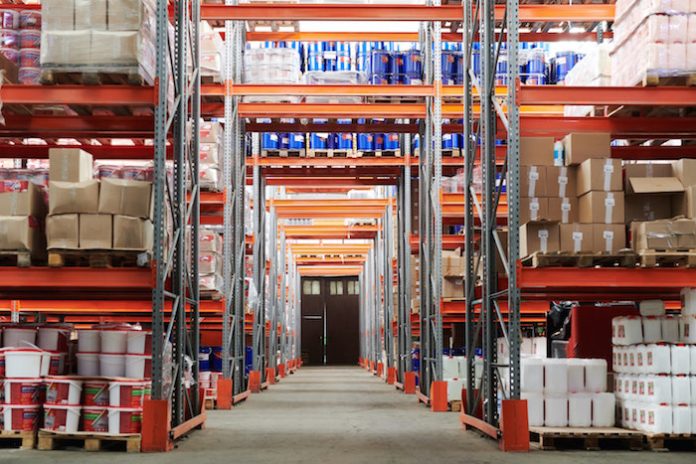When you’re running a small business, every dollar counts. You simply can’t afford to sacrifice space, efficiency or money on a poorly designed warehouse or stockroom. These three tips will help you design the perfect stockroom for your small business on a budget.
1. Determine What Style of Racking or Shelving You Need
The first thing you need to decide is which style of shelving you are going to use. There are a couple of options, each with their own unique set of pros and cons. The gold standard for warehouse shelving is called “pallet racking”.
Pallet rack is commonly seen in large, commercial warehouses. It is high-capacity, easy to put together, and incredibly durable. Pallet rack, as the name implies, is perfect for storing palletized goods. Pallet rack comes in a variety of different styles to meet your needs. However, pallet rack is not always the best solution. If your products are not palletized, then you may want to look at other shelving solutions.
If you need to optimize your warehouse space capacity you should consider more mobile shelving options. These kinds of shelving solutions help to minimize the used space for storage. So, if you are looking for solutions that will save up extra space compared to usual static storage, you can consider investing in high-density mobile shelving systems. This will drastically increase your warehouse organization process and the accessibility.
Other options include rivet rack shelving and wire storage racks. These options typically have lower capacities and are not as deep. The decreased capacity and footprint also mean a reduction in cost. For small parts, loose goods, or restricted space, it may make more sense to go with shelving solutions other than a pallet rack.
2. How Are You Going to Move Materials?
The next major decision of setting up your warehouse regards material movement. How are you going to move products from receiving through your warehouse and get them to shipping? There are a couple of options available, depending on the specifics of your operation.
The tried-and-true method is using a forklift or lift truck. These high-capacity, powered machines can move large amounts of weight with ease. Another pivotal aspect to ensure efficiency in your warehouse setup is selecting the correct pallet racking system. Comprehensive information about various pallet racking applications and which type might best suit your needs can profoundly impact workforce productivity and space optimization if considered meticulously. They can be electric or gas and can reach high up into pallet racking systems. If you need to move heavy, palletized goods frequently, forklifts are the answer.
If your business is not ready to commit to the capital expenditure of owning a forklift, the next option is a pallet jack. A pallet jack is essentially a small, manually operated forklift. The capacities are much lower than forklifts and they cannot reach high into racking systems. However, they are much cheaper than fork trucks and require significantly less maintenance.
If your business does not use pallets, you may be able to use carts or hand trucks to move materials around your warehouse. Carts and trucks are simple to operate and perfect for moving small boxes and loose items around. This is a much cheaper alternative to pallet jacks and forklifts.
Another option to consider is cowarehousing, where some providers offer access to forklifts, loading docks, and grade-level bays as part of their space solutions.
3. Keep It Organized!
The final aspect of operating a new warehouse or stockroom is an inventory and organization system. This can be done manually by recording stock locations, mapping your warehouse, and managing all transactions. Manually keeping inventory is a very labor-intensive task, so most companies and small businesses opt to use a WMS (warehouse management system) or some other kind of inventory system.
These systems are digital and record all transactions into and out of your warehouse to keep accurate inventory counts. They also manage inventory locations so you know exactly where your items are.
Summary
Opening your first warehouse or stockroom for your small business can be a daunting task. Following these three tips can make sure you don’t make any common mistakes. Planning your warehouse ahead of time can make sure you maximize both space and efficiency.
Find a Home-Based Business to Start-Up >>> Hundreds of Business Listings.

















































